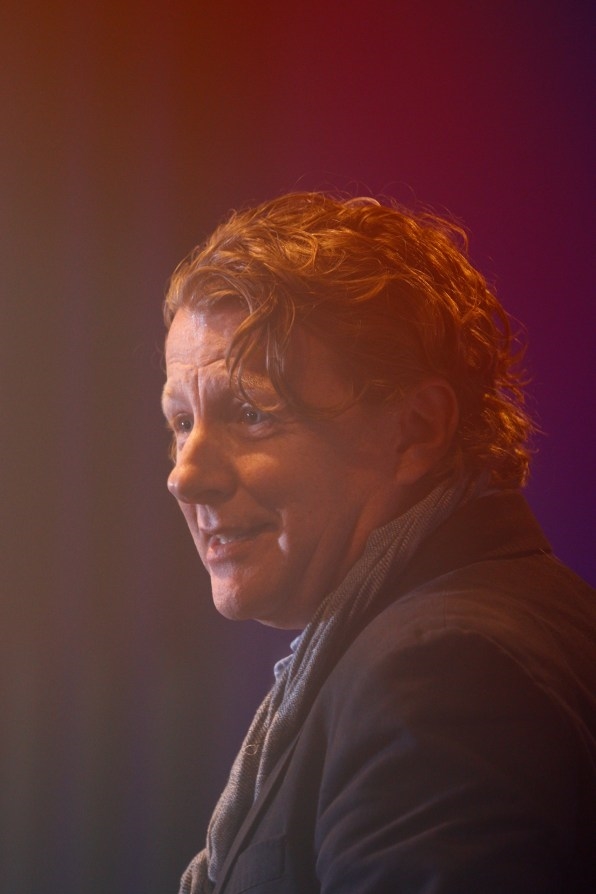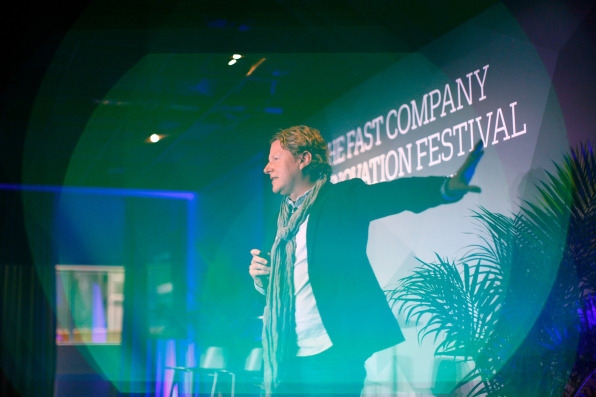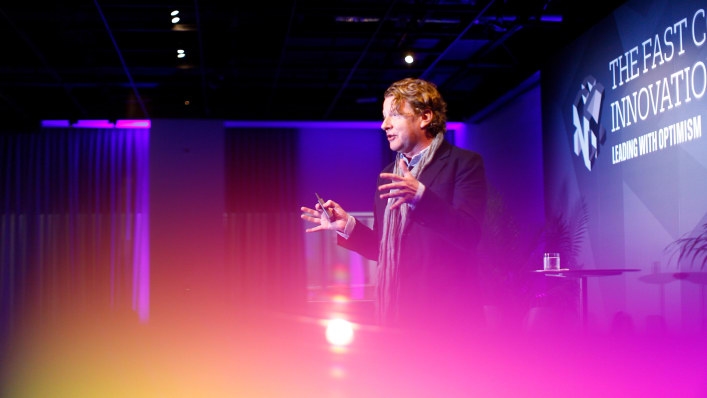Why Ideo’s Fred Dust Thinks We Must Relearn The Art Of Dialogue
Turn on any cable news program or scroll through Twitter, and it’s painfully clear that we’re often talking at each other, rather than with each other. And that solves nothing.
Ask Fred Dust, partner and global managing director at the design firm Ideo, about how we got here and he’ll say it all started with the TV dinner—not the iPhone.
It was 1953 when C.A. Swanson & Sons started mass-marketing quick-cooked meals in convenient trays designed to let us sit in front of the boob tube at dinner time.

“That was the moment we invited technology to our dining room table,” Dust says. “That’s when we gave up ‘us’ as the host of our dinner time.”
It’s been a slow slide downhill from there.
Dust, who is in the business of analyzing how we communicate with each other, is concerned. At a talk Tuesday during the Fast Company Innovation Festival in New York, he said: “I’m going to posit that we are getting dialogue wrong …We’ve actually done it well for thousands of years, and it’s only now that we’re not doing it well.”
Our use of screen-based technologies—smartphones, tablets replacing waiters at restaurants, and so on—is wrecking our ability to interact with actual humans. To listen.
Televised political debates, Dust says, have taught us to focus more on the appearance of the candidates than the content of the debate itself, further diminishing productive dialogue. The rise of televised punditry, which began with the William Buckley vs. Gore Vidal showdowns of the late 1960s, prioritized an almost bullying conversational style, in which the more aggressive speaker emerged victorious. That same bully mentality, Dust says, has infused the structure of workplace dialogues, which were informed by leadership training programs developed by the author and lecturer Werner Erhard in the early 1970s.

So here we are, in a place where we are more comfortable being talked at, through a screen, than we are talking with each other, face-to-face. So how do we redesign our dialogue structures to get back to listening to each other?
“One of the things we’re doing at Ideo is looking to design practices of the past, and seeing how they might work for us in the future,” Dust says.
Part of what we can learn from looking to tradition is how to actually design designated time for in-depth dialogue and conversations. In recent months, Dust says, “we’ve had crisis after crisis,” from the Las Vegas shooting to the California wildfires, “with no time for conversation.”
And here’s the thing, Dust says: “Without that conversation, without that dialogue, we end up in a really bad place.” Specifically, “we continue to live in what we at Ideo call the denial phase, where we think we can’t do anything about these tragedies.”
Setting aside time to take a collective breath—not unlike sitting shiva, the Jewish tradition in which family members come together to mourn a lost loved one and discuss how to support each other and adapt to the loss—allows us to engage in finding a way forward, together, Dust says.
“The times when people learn the most and are most open to change are when they are coming out of a crisis,” Dust says. That type of reflective, change-embracing mentality can and should, he says, extend to entire communities and countries in the wake of a crisis. “If we’re not designing for how we have dialogue in those critical—potentially curable—moments, we won’t be able to get to radical change,” Dust says.
But these conversations, he adds, cannot take on the form of a polarized debate. Ideo has designed a new, interactive form of discussing difficult and complex topics called Creative Tensions.
The Creative Tensions format works by collecting a group of people together in a room, and asking them to arrange themselves along a tension—for example, between the statements “police make me feel safe” and “I feel nervous when police are around.”
People move, like life-size chess pieces, around the room, aligning themselves next to others whose views differ slightly from their own. The fluid dialogue structure, Dust says, allows people to find common ground, rather than focusing on their differences.
In that respect, it mirrors the way “in which long conversations around big civic issues in ancient Greece took place over dinners for days and days,” Dust says. These dinners enabled people to move around and discuss these topics with others in attendance (often fueled by wine–“the symposium is named for the sympa, which carries the wine),” Dust says. This format allowed the conversation to slow down and, unlike a polarized debate, unfold in a way that enables a spectrum of viewpoints to emerge.
What’s important, Dust says, is that we need to get back to a point where we listen to each other from a place of mutual respect and empathy—and if possible, enjoy doing so.
In an effort to keep the dialogue around dialogue going, Ideo has launched a website called Designing Dialogue, in which it will be crowdsourcing ideas for creative conversation structures. If you’ve encountered any particularly well-designed dialogues—from workplaces, cultures, the past or the present—now is your chance to share them.
Fast Company , Read Full Story
(53)














